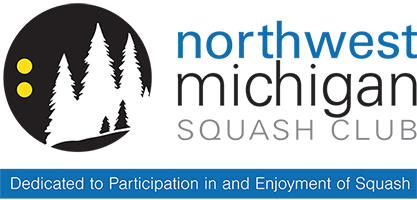US Squash has adopted the World Squash Federation rules for squash. The WSF rules can be found here: www.worldsquash.org/rules-of-squash-2/. Players should familiarize themselves with all the rules, not just those related on-court play.
WSF Rules 8 and 9 (respectively, Interference and Ball Hitting a Player) are designed to allow the stoppage of play when action on the court threatens safety and fair play, so the conflict can be sorted out.
Because the competing players share a relatively small space, the most important rules of play deal with situations when player interferes with another’s shot. Accordingly, “interference” is an important concept related to on-court conduct and fair play.
Interference
When it is a player’s turn to hit the ball (the “striker”), a striker is entitled to freedom from “interference” by the opponent. To avoid interference, the opponent must try to provide the striker with:
- unobstructed, direct access to the ball,
- a fair view of the ball,
- space to complete a swing at the ball and
- freedom to play the ball directly to any part of the front wall.
If a striker finds their opponent interfering with the play, the striker can accept the interference and play on, or stop play.
As soon as there is interference, a player may request a “Let” and immediately stop play. This may occur when there is more than minimal interference with reaching or striking the ball, or if there is a possibility of colliding with the opponent or hitting them with racquet or ball.
Usually, but not aways, it is the striker who seeks a Let.
Failure to stop play to request a Let waives the right to seek a Let when the rally has ended.
When a Let is requested, the situation is reviewed by the players and a decision is reached. Usually, little discussion is needed because the reason for the request for the Let is obvious.
The rules provide for three possible outcomes to the request for a Let:
“No Let” and the outcome of the play stands, because the interference was minimal or the striker had no chance to make a good return notwithstanding the interference;
“Let” and the point is replayed from the prior serve, because while the other player made every attempt to avoid the interference, the striker’s ability to reach and play the ball was affected; or
“Stroke” and the player requesting the Let is awarded a point and the serve, because the interference prevented the striker from reaching or playing the ball.
Because the basis for a No Let, Let, and Stroke can be complicated, particularly for new squash players, it is recommended that players familiarize themselves with Rules of Squash to understand the distinction between each.
Click here to read a summary of Rules 8 and 9 covering Lets.
